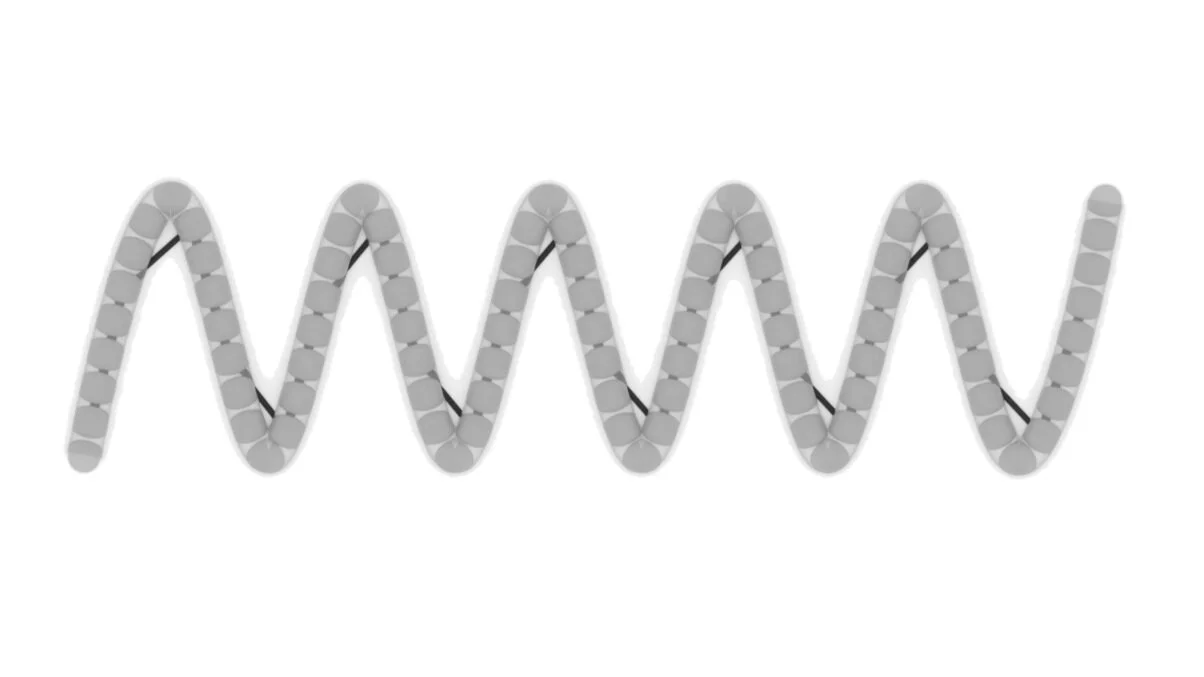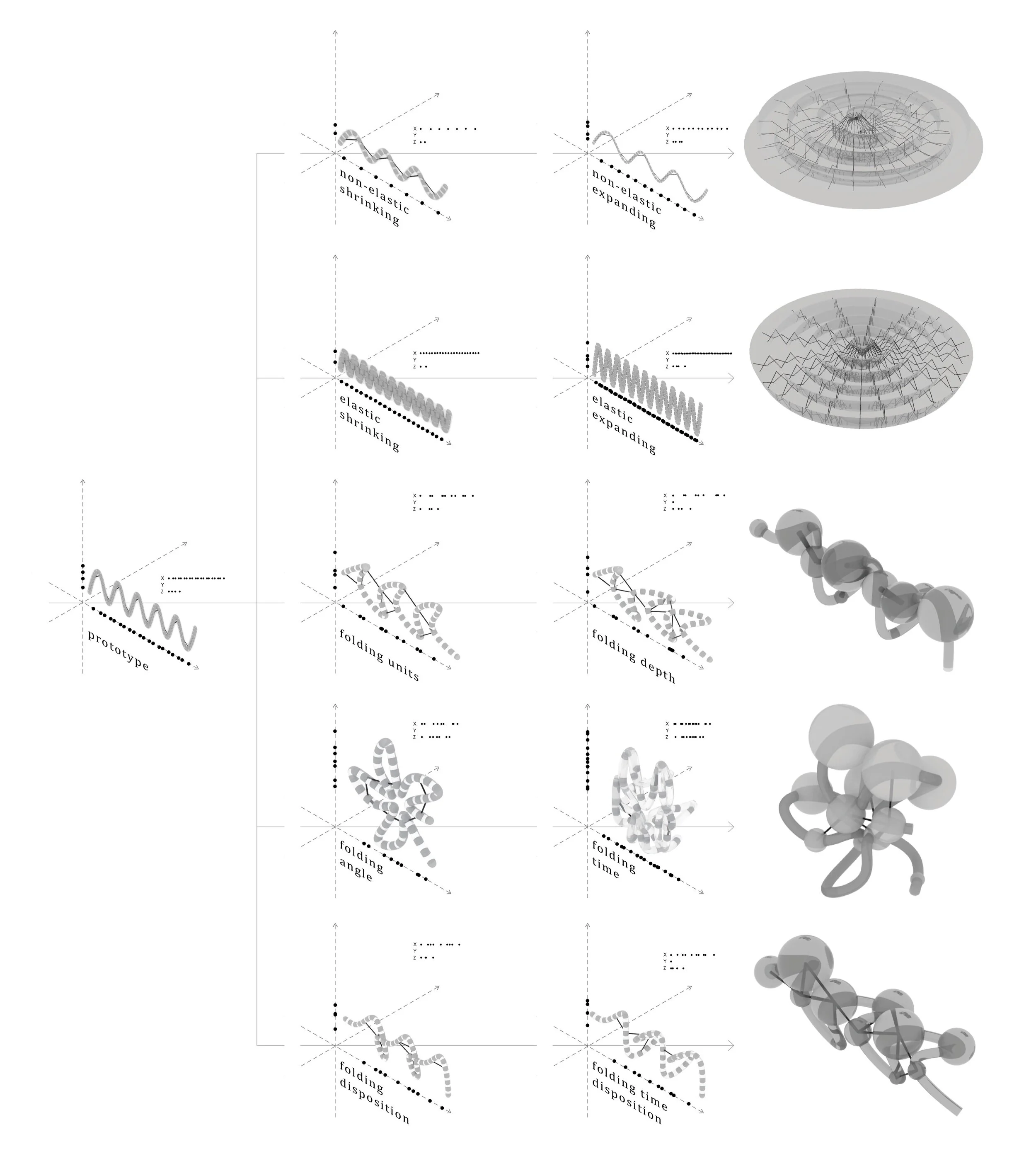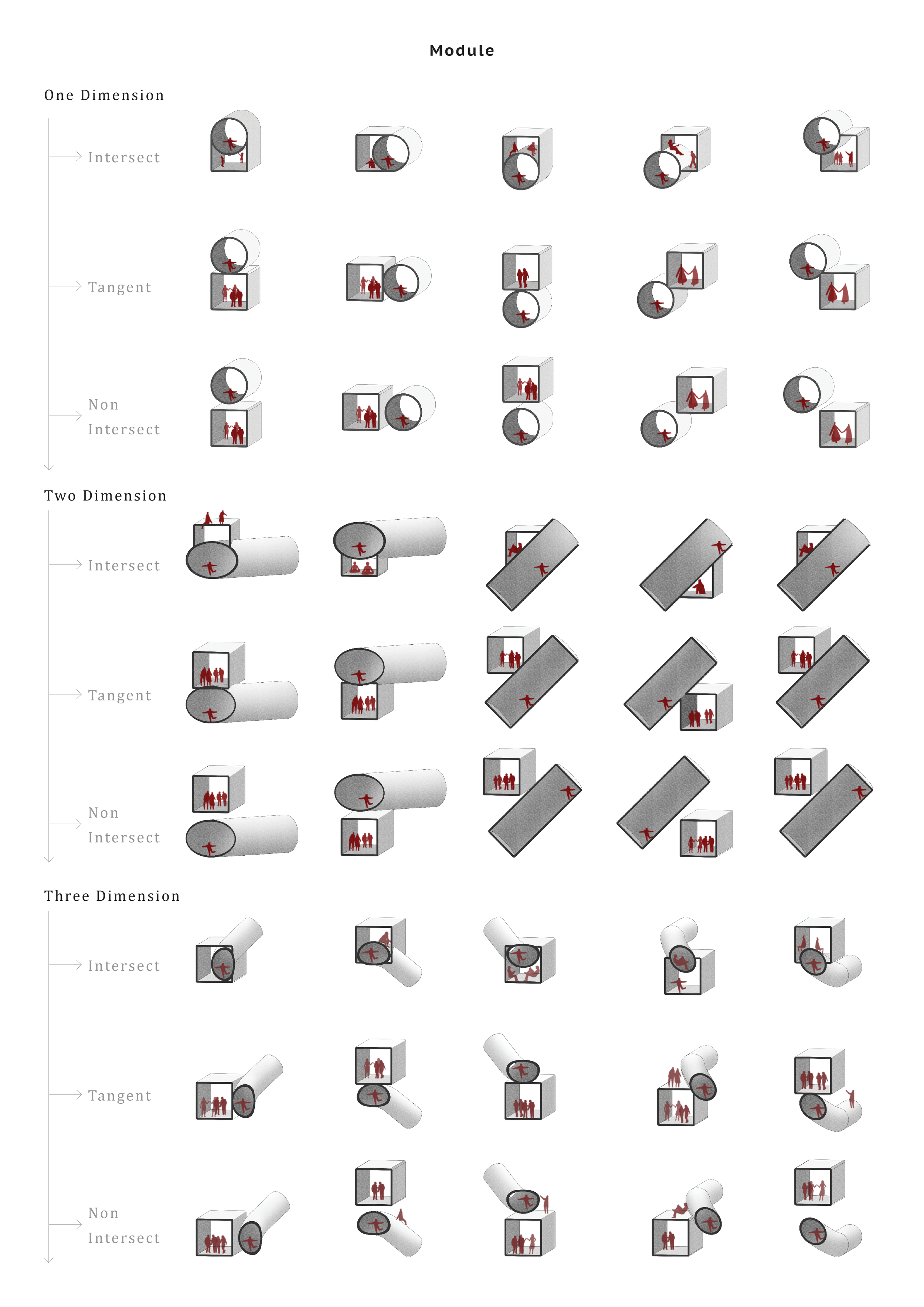Weaving
Duration
Sep 2015 - Jan 2016 (4 mo)
Advisor
Jeongder Ho
Category
Computaion | Academic
Location
Taichung, Taiwan
Keywords
Computational organicism, Design process, Evolutionary design, Spider silk, Threshold space
Context
The diverse forms of nature, in particular and biological forms, have long been a preoccupation of the architect. As a special category of natural form, biological organisms exhibit extraordinary levels of design adaptability across multiple generations based upon the inherent intelligence of the evolutionary mechanism. Evolutionary design theory in architecture seeks to harness this generative intelligence as the foundation for a new architectural design process.
- Brian Holland(2010) Computational Organicism: Examining Evolutionary Design Strategies in Architecture.
The project is an experiment based on Brain Holland’s study, seeking to develop a design process through evolution intelligence. The intention is to free people’s minds and subverts the hierarchy of form and concept.
Prototype: Molecular structure of spider dragline silk
Spider silk is a composite material with hierarchical structure. Although the types of protein and the sequence determine the major constituent of silk, the spinning and folding process strongly influenced its function.









